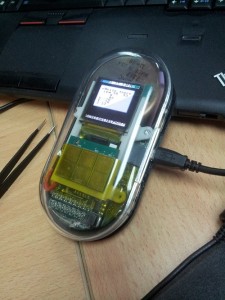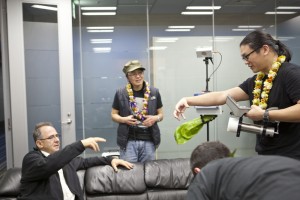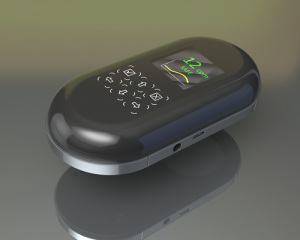
Sean Bonnerʻs Safecast X Kickstarter Geiger Counter was recently rated one of Kickstarterʻs Best in this Wall Street Journal article. The instrument is remarkable, and there is also an interesting history behind it, and its creator, Bunnie Huang.
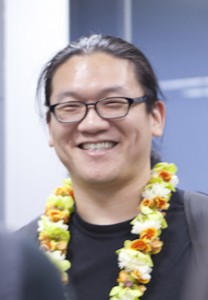
For background, I first met Sean and Bunnie in Tokyo in April 2011. The building we were conferencing in was swaying from aftershocks of the Tohoku earthquake. The conversation was largely about the lack of data on radiation levels. The situation to the North was unstable and disconcerting.
The conference was attended by movers and shakers in the global technology arena, and the traditional media world. The vital data transfer rate Twitter vs. Traditional Media during the Haiti earthquake, presented by Adhur Chowdhury, Chief Twitter Scientist, was truly impressive. A number of groups and individuals in Japan and beyond were harnessing the power of the world wide web to communicate radiation data, but the numbers were confusing, some of the instrumentation was unreliable, and general evolution was needed. The Safecast Geiger Counter Reference Design concept was created under these conditions. The people, circumstances, technology, the scope of the larger project it is part of, are worthy of a book. I will attempt to condense parts of the story into a series of blog posts.
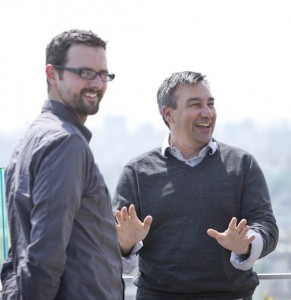
Geiger Counters have been part of my life since an early age, back in the 1950ʻs, when they were built with vacuum tubes – and were the size of a large lunch box. Analog meters were standard issue for decades, sometimes supplemented with scalers using neon light bulbs. Many of the early instruments required special, expensive, batteries. Iʻve witnessed, and been a part of, the evolution of the Geiger Counter, Iʻve designed them, repaired them, evaluated them, and Iʻve started and worked with companies that make them from Tennessee to California, New York, Nanjin, Minsk, and places in between and beyond.
The Safecast Reference Design is something new and different in many regards. One, it is an open source project with the potential for world wide collaboration and evolution of functions and features. It also has enough power under the hood to handle any conceivable workload in terms of calculations and communications of data. It is small and beautiful and easy to use. And it is designed to share information with the world. Iʻll write more about some of the other salient features of this instrument later.
The Safecast Geiger Counter Reference Design is basically a labor of love by Bunnie, a very talented engineer. Itʻs one of his contributions to help the people of Japan during a very challenging chapter in Japanʻs history. And the instrument will have impact and influence far beyond Japanʻs borders. The Safecast X Kickstarter version of this instrument is a very limited edition of Bunnieʻs Safecast Reference Design. The Limited Edition will be in clear plastics with laser-etched serial numbers starting at 001.
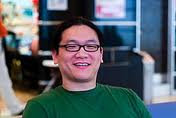
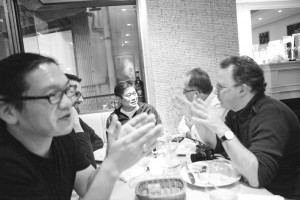
Bunnie was introduced to me during the April 2011 NCC conference, by Joi Ito, now Director at MIT Media Lab. Again, this was during the period when 4 unstable reactors were still spewing radioactive materials, and Tokyo had been dusted. There was a world wide shortage of Geiger Counters and other types of radiation detectors. Not only was demand high, due to the emergency, but there were shortages of key components affecting the industry. Manufacturers in Japan affected by the earthquake, tsunami and meltdown, supply many components critical to the worldwide electronic industry.
High quality Geiger tubes, the heart of all high quality Geiger Counters, are manufactured under rigorous conditions in a multistage process that cannot be speeded up without degrading the quality of the detector. So there were only a very limited number of instruments available.
I handed over every instrument I could put my hands on to Joi and his friends, because I knew they would publish the data they gathered rapidly.
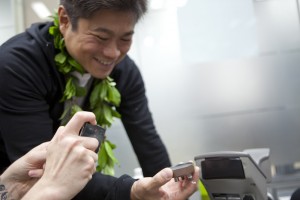
I brought some Geiger Counter components with me to Tokyo, including some “Pancake” tubes, for the people at Tokyo Hackerspace, who were working long hours to develop instruments and get them into the field. The Geiger tube is the heart of a Geiger Counter. While the technology behind them is old, they are still often the best detector for mixed alpha, beta, gamma, x-radiation sources. The large mica window on a Pancake detector allows the detection of all of these types of radiation. A lot of measurements in Fukushima were being made with energy compensated detectors. These tubes have a thick side wall and cannot measure anything except energetic gamma rays. There was concern about the people who were waving these over their food and thinking it was safe to eat. The main isotopes remaining on the ground in Fukushima were Cesium 137, Cesium 134, Strontium 90, all primarily beta emitters. And there is some concern about Plutonium, an alpha emitter. The pancake tubes were in incredibly high demand. They were worth their weight in gold at this critical time in history.
Bunnie decided he wanted to make a major commitment to this fledgling data logging/sharing project, which became Safecast, by designing the reference Geiger Counter, with one of these precious “Two Inch Pancake Tubes” at the heart of it. If you want to dive deeper into the heart and soul of Bunnie and his creation, read his blogpost: Safecast Geiger Counter Reference Design. Bunnieʻs project has also been widely Tweeted, and written about in Engadget, BoingBoing, Gigaom, Security Management, Live Science, The Verge.
Bunnie is an incredibly talented young man. Joi Ito told me he considers him to be the worldʻs best industrial designer. Itʻs been a real honor to meet and collaborate with Bunnie to bring this instrument into the world. My next post will have some more images of Bunnieʻs creation, a little more history, an update on the limited edition release, and information on the upcoming commercial version of the instrument.
